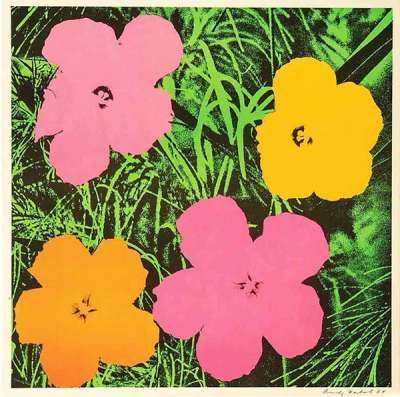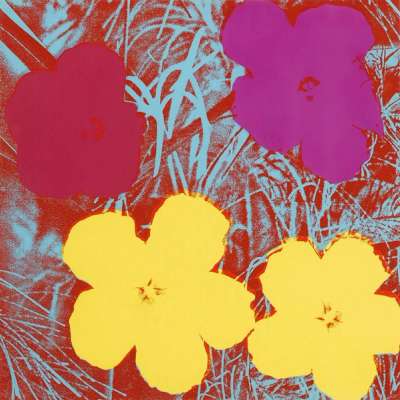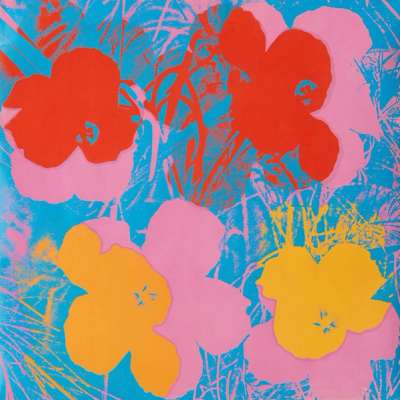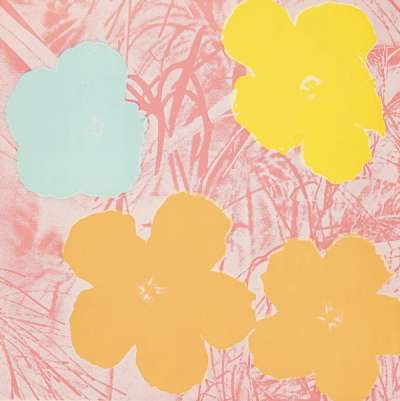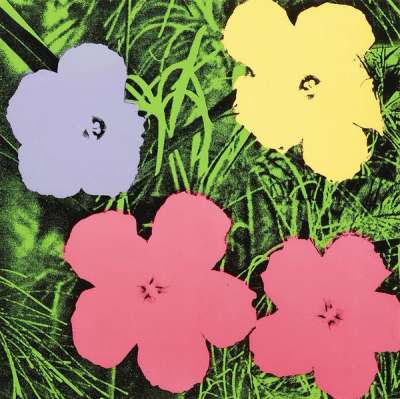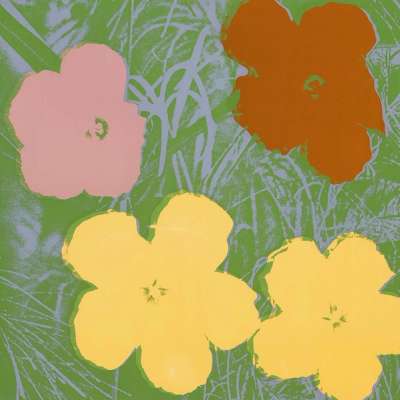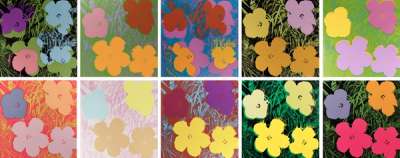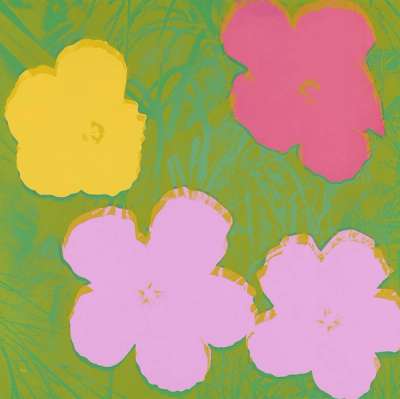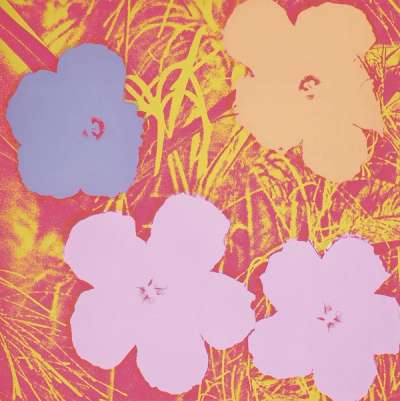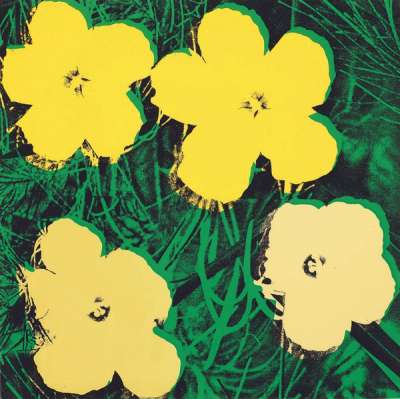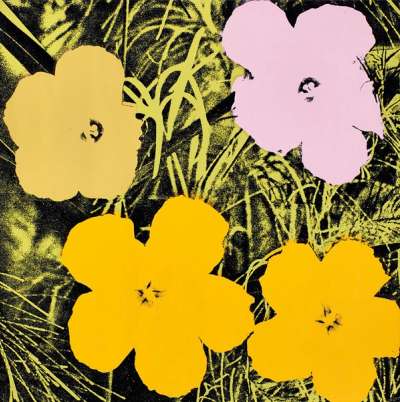
Flowers (F. & S. II.64)

Flowers (F. & S. II.64)
Signed Print
Andy Warhol
£50,000-£70,000Value Indicator
$100,000-$140,000 Value Indicator
$90,000-$130,000 Value Indicator
¥480,000-¥680,000 Value Indicator
€60,000-€80,000 Value Indicator
$530,000-$740,000 Value Indicator
¥9,940,000-¥13,910,000 Value Indicator
$70,000-$90,000 Value Indicator
There aren't enough data points on this work for a comprehensive result. Please speak to a specialist by making an enquiry.
91 x 91cm, Edition of 250, Screenprint
AAGR (5 years) This estimate blends recent public auction records with our own private sale data and network demand.
TradingFloor
Auction Results

Track auction value trend
Meaning & Analysis
Andy Warhol’s print Flowers (F. & S. II.64) from his iconic Flowers series (1970) is an iteration of the artist’s famous flower motif, showing four hibiscus flowers against a pattern of grass and undergrowth. Using vivid hues of blue, pink, purple and green, Warhol deliberately rotates and misaligns the screen print ink that overlays the original photographic image. In doing this Warhol reveals the screen printing process that comes with its own imperfections, proving that there is in fact originality in repetition.
Flowers (F. & S. II.64) has more of a painterly quality when compared to other prints in the series, due to the way Warhol has misaligned the ink from the image underneath. The abstract nature of the series comes to the fore with this print, as Warhol uses the screen print method to create blots and splashes of colour that float on the image surface, thus mocking grand and gestural marks of the Abstract Expressionists. Warhol combines the concept of the mass-produced with the idea of human error and spontaneity to put into question the ideals of this movement that preceded him.
Reminiscent of the traditional art historical genre of flower painting, in particular Impressionist works such as Claude Monet’s Waterlilies, Warhol chooses to turn art history on its head by reproducing a magazine image in a ‘machine-like’ manner. Consciously banal and synthetic, he rejects hierarchical compositions in favour of flattened perspective and abolishes complex colour harmonies for monochrome planes of flat colour and artificially bright ink.
